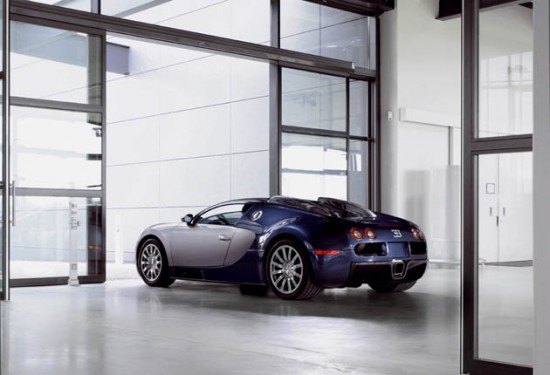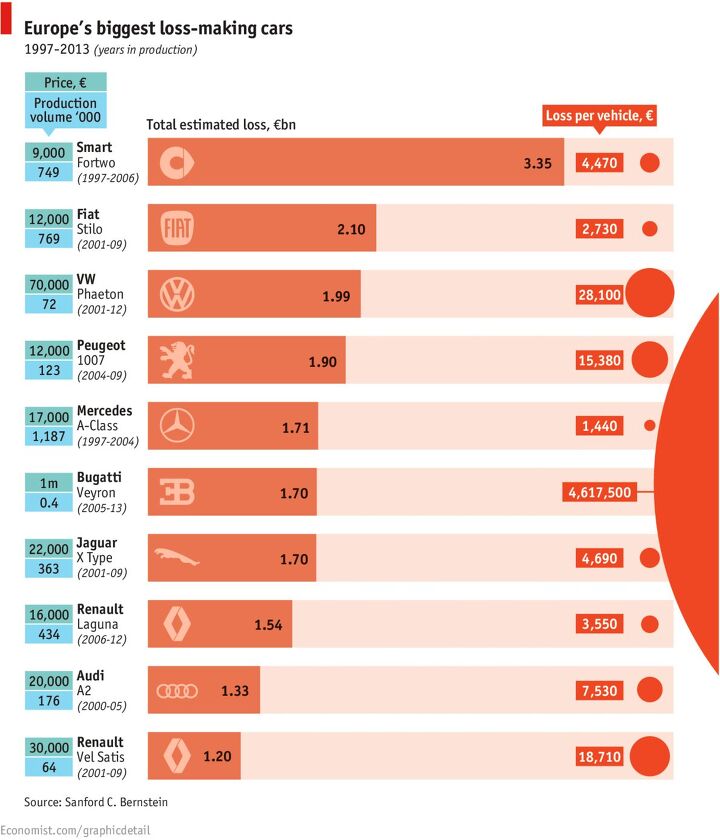#BugattiVeyron
2018 Bugatti Chiron Fuel Economy Figures Released: Not a Toyota Prius Rival Just Yet
The Bugatti Veyron EB 16.4 debuted in 2005 to spec sheet acclaim. On paper, there had never been anything like it. 16 cylinders, four turbos, 987 horsepower.
And 10 miles per gallon of premium gasoline.
The 2018 Bugatti Chiron is a better car, as it should be after more than a decade passed between development cycles. There are still 16 cylinders and four turbos, but Bugatti increased the power (having intermittently done so during the Veyron’s tenure) to 1,500 horses.
That 52 percent increase in power is not quite matched by a commensurate improvement in the distance travelled per gallon of premium gasoline. Not quite.
No Fixed Abode: The Chiron-Sanders Effect
How about that new Bugatti Chiron? It looks pretty good to me. Better than the last one, anyway.
I always got the impression that its predecessor, the Veyron, wasn’t styled so much as it was excreted. There was just something unpleasant about it; I think the term used in modern architecture is “Brutalist,” and it describes objects that are designed to force themselves on the viewer without gentleness or grace. It applies well to the the Veyron, which was a technical achievement first, a statement of insane Gilded Age wealth second, and a car either third — or perhaps not at all.
Next to the sleek, purposeful-looking Chiron, the Veyron is a squat lump of offensive conspicuous consumption. Yet it had, and continues to have, an undeniable and magnetic attraction. One of our very occasional contributors at TTAC is a fellow who has owned everything from a Lagonda to a 458 to a Ford GT, and all at the same time to boot. For something like three years, however, his Facebook profile photo was of him behind the wheel of a Veyron. It is an object to which even the enormously wealthy aspire. Nothing says “my other car is a Gulfstream” quite like the Beetle-esque Bugatti.
The Finally Defunct Bugatti Veyron's U.S. Sales Run: By The Numbers
Finally. The Veyron is done.
Bugatti reportedly sold the last Veyron, a car which will be displayed at the Geneva auto show in March, to a customer in the Middle East.
Volkswagen-owned Bugatti’s 450-unit production run comes to a close after nearly a decade of delivering cars to customers. Although the cars routinely sold for more than $2M, Bloomberg referenced Singapore-based analyst Max Warburton who believes VW lost €4.6M per car, more than USD $5M.
Unlike the detailed sales reports we see each month from Volkswagen of America’s namesake brand, Veyron-specific numbers were never formally reported. Automotive News reports that approximately one-quarter, or 113, of the Bugatti Veyrons produced ended up in the United States.
I Woke Up In A Used Bugatti
( video and lyrics NSFW)
Once the domain of mainstream luxury brands, certified pre-owned programs are starting to filter down to mainstream brands…and apparently, to Bugatti as well.
The Europeans Show Ford & GM How Losing Money Is Really Done
Chart: Economist.com
Back in the 1950s, when Europe was still rebuilding after World War Two, Ford Motor Company and General Motors decided to show the world what a cost-no-object car was like in the American idiom. First Ford introduced the 1956 Continental Mark II, hand assembled down to the component level, that was said to lose $1,000 on each and every $10,000 Mark II sold. Adjusting for inflation, that loss is the equivalent about $8,600 in 2013 money. A year later, GM started selling the Motorama influenced Eldorado Brougham, at an even steeper $13,074. Motor City lore has it that not only was the Eldo Brougham thousands more expensive than the Mark II, its loses exceeded those of the Mark II by thousands of dollars as well. Now the Sanford C. Bernstein brokerage has looked at how much money various European automakers have lost on particular cars since 1997.



















Recent Comments